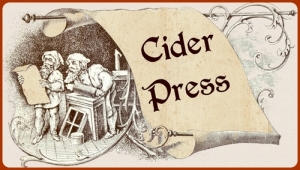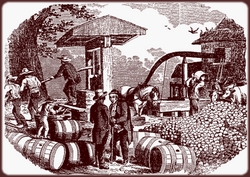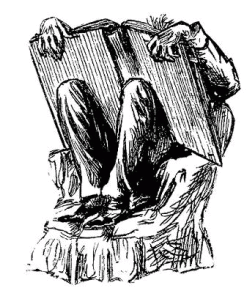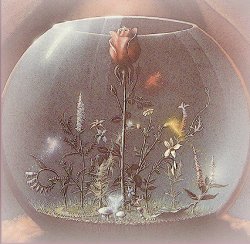Texas
history is full of legend and lore. One such tale is the "Yellow
Rose of Texas" - a legend commemorated in song. But is
there such a rose? And if there is, which rose is it?
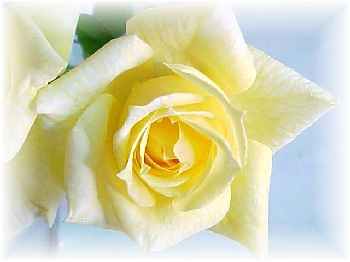 The
Song
The
Song
Originally conceived as a folksong in early Colonial Texas history,
the first recorded copy of the "Yellow Rose of Texas"
was handwritten on a piece of plain paper circa 1836. Historical
records indicate this copy was most probably transcribed either
shortly before or just after General Sam Houston lead his brigade
of Texas loyalists against the army of General Antonio Lopez
de Santa Anna at the Battle of San Jacinto on April 21, 1836.
The folksong's lyrics [see Lyrics] tell of a black American
(presumably a soldier) who left his sweetheart (a "yellow
rose") and yearns to return to her side. "Yellow"
was a term given to Americans of mixed race in those days -
most commonly mulattos. And "Rose" was a popular feminine
nineteenth century name; frequently used in songs and poems
as a symbolic glorification of young womanhood. [Turner]
The original transcription was poorly made and full of spelling
errors. This would indicate [that] the transcriber was somewhat
uneducated but possibly influential, as it was signed with three
embellished initials. This copy is now housed in the archives
at the University of Texas in Austin.
Although no name is given as the song's composer in any of the
records, a hint may come from the fourth line in the chorus
which infers the soldier is from Tennessee. Unfortunately, many
men from Tennessee moved to (or were brought to) Texas during
its colonization and war of independence.
In 1858, the first copyrighted edition of the song was published
in New York. The cover states the song was "Composed and
Arranged Expressly for Charles H. Brown by J.K." It was
common in the nineteenth century to keep "ghost" composers
secretive, especially if the songs had slave folksong origins.
Hence, we don't know who "J.K." was, nor are we certain
he was even the composer. And we're not likely to find out.
Soon after it was published, the song increased in worldwide
popularity and was sung by minstrels both in this country and
Europe. As the American Civil War began, it was adopted as a
marching song by soldiers everywhere - most often, as you might
expect, by those soldiers from Texas. But since it referred
to (and was to be sung by) a black American soldier, the song's
lyrics were changed. By the early 1860's, the term "darky"[sic]
was replaced
with "soldier," and the first line of the chorus was
changed to
"She's the sweetest little flower...."
Finally,
in 1864 with the end of the war nearing, a fourth stanza was
added to reflect the dismay and hopelessness of General John
B. Hood's retreating Texas Brigade after its disastrous Tennessee
campaign. [Abernathy] Some of his troops were so disoriented
after the loss, they actually thought the war was over and started
returning home - singing, of course, "Yellow Rose of Texas."
So then, who was Yellow Rose? The answer comes from historical
records which tell us the song's original title was "Emily,
the Maid of Morgan's Point." [Turner]
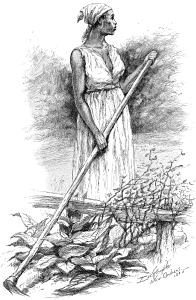 The
Legend
The
Legend
Emily of Morgan's Point refers to an indentured servant, somewhat
forgotten in history for her heroism during the Texas war of
independence from Mexico. Some contend the legend is a myth
- not a part of history. [Abernathy] The historical evidence,
however, indicates otherwise.
The legend begins in 1830 with the immigration to Texas of one
James Morgan, an entrepreneur from Philadelphia with extensive
holdings. Morgan was eager to capitalize on the cheap land and
business opportunities in the Mexican colony which would ultimately
become Texas. He formed several partnerships with New York speculators
for land deals in the fledgling colony. However, Texas did not
permit slavery and Morgan had 16 he wanted to bring with him.
So to circumvent the law, he converted his slaves into 99-year
indentured servants.
In the years that followed, a scheme was conceived to flood
Texas with non-Mexicans from the United States. To capitalize
on that movement, Morgan returned to New York in 1835 to recruit
more workers for his settlement. One such émigré
was a twenty year old woman named Emily D. West - "an eastern
import with extraordinary intelligence and sophistication."
Emily West was mulatto and possibly from Bermuda, since Morgan
brought many of his workers from this Atlantic island. According
to some records, West volunteered to be indentured, most probably
to escape the prejudice against her mixed race. And, as was
the custom for an indentured worker at the time, she changed
her last name to that of Morgan's.
By the following year in 1836, the war for Texas' independence
from Mexico was fully engaged and led by General Sam Houston.
James Morgan's now successful settlement, New Washington, was
strategically located near the mouth of the San Jacinto River.
He freely gave his famous oranges, various grains and fattened
cattle to Houston's men. One particularly strategic parcel of
land named Morgan's Point (so called to this day) extended into
San Jacinto Bay. From Morgan's Point, flatboats were loaded
with supplies for Houston.
Thus established as a "friend of Texas," James Morgan
was appointed a Colonel. And in March, 1836, he was assigned
to the Port of Galveston (some 30 miles away) to guard Texas
refugees and fugitive government officials. So that Houston's
supply line would continue, he left Emily West Morgan in charge
of loading flatboats destined to feed the army.
By the afternoon of April 18, 1836, General Santa Anna had moved
his men into position to attack the Texas rebels he knew to
be nearby. On his approach was New Washington - now mostly deserted
as its inhabitants fled before his marching army. One of those
that remained behind, however, was Emily, and Santa Anna was
immediately struck by her beauty.
The next morning, after his men helped themselves to the crops
and cattle, Santa Anna set about securing one more "spoil
of war" - Emily. He captured her and a young "yellow
boy" named Turner loading yet another flatboat headed for
Houston's army. Santa Anna cajoled Turner to lead his Mexican
scouts to the Houston encampment. But as they were departing,
Emily convinced Turner to escape from Santa Anna's men and rush
to Houston's camp to inform him of the Mexican general's arrival.
General Santa Anna believed himself quite the ladies' man. And
although still married to a woman in Mexico, he remarried one
of his teenaged captives from his Texas campaign. But he had
been without his most recent bride for two weeks now. Emily
looked like she would make a very suitable replacement.
Thus, he ordered the immediate setting up of his encampment
on the plains of the San Jacinto despite protestations from
his colonels who insisted the location violated all principles
of wartime strategy. And they were right. Houston, upon hearing
of Santa Anna's location from Turner, moved his troops into
the woods within a scant mile of the beguiled general's headquarters.
On the morning of April 21, Houston climbed a tree to spy into
the Mexican camp. There he saw Emily preparing a champagne breakfast
for Santa Anna, and reportedly remarked, "I hope that slave
girl makes him [Santa Anna] neglect his business and keeps him
in bed all day." [Garner]
By afternoon, the great final battle for the independence of
Texas was engaged. The Mexican army was caught completely by
surprise, and Santa Anna was literally caught "with his
pants down." (Reports at the time said he was caught running
away from the battle with his studded silk shirt opened and
concealed under a dead soldier's blue smock - hurriedly put
on during his attempted escape.)
Emily West Morgan survived the battle and made her way back
to NewWashington. Two days later, James Morgan, who had not
heard of the battle, returned from Galveston and Emily told
him of her ordeal and the outcome of the last great battle.
The colonel was so impressed with Emily's heroism, he repealed
her indenture and gave her a passport back to New York - the
final chapter of which we have no record.
We do know, however, Morgan made certain everyone knew of Emily's
heroism. He told everyone he encountered or anyone who would
listen, and recorded the story in his journals. Morgan "kept
a running commentary on Texas affairs with Samuel Swartwout,
one of Houston's friends in New York City." [Wisehart]
He also told his story to an English friend and ethnologist,
William Bollaert, who recorded the story in every detail. [Turner]
There are some in recent history who have suggested Emily's
efforts were made because she was attracted to the opulence
and good looks of the Mexican general. But the accounts from
those who were there indicate she was a loyal "Texian"
who did what she could for the independence of Texas. [Turner]
Today, the heroic acts of the young woman from New York are
still reverently commemorated by the members of the Knights
of the Yellow Rose of Texas each April 21 at San Jacinto.
 The
Rose
The
Rose
To answer the questions, "Is there a Yellow Rose of Texas?"
and if so "What is it?", the answer is there was a
"Yellow Rose." But it was not a "what" it
was a "who" - Emily West Morgan.
It follows, then, that we ask "Is there a rose named in
honor of Emily and her heroic act?" Although a possibility,
probably not.
In rose literature, the Old Garden Rose most frequently associated
with the "Yellow Rose of Texas" is Harison's Yellow.
Let's examine the possibilities.
In the 1830's, George Folliott Harison was a New York lawyer
and amateur rose hybridizer. He (or possibly his lawyer father,
Richard) crossed what is believed to be Rosa foetida persiana
(ÎPersian Yellow') with R. spinosissima (= R. pimpinellifolia)
('Scotch Briar Rose'). The resulting hybrid was named Rosa x.
harisonii or ÎHarison's Yellow.' [Phillips and Rix] Although
once-blooming, Harison's Yellow was renowned at the time for
its vigor, hardiness, resilience and resistance to disease.
The obvious link between the woman, the song, and the rose is
New York City. Although I could find no record indicating George
and/or Richard Harison were business partners with James Morgan,
as "men of means" this may have been a possibility.
It is almost a certainty the New York press would have picked
up on the tales coming from the Battle of San Jacinto and the
subsequent independence of Texas - especially since James Morgan
had business ties to the city. Almost as certain would be James
Morgan's account of his former servant's heroism - especially
since he would have been a "neighbor" from Pennsylvania
with numerous business dealings in New York; and she would have
been considered a New Yorker who had survived a Texas adventure
and returned "home" as a "free woman" to
tell about it.
Although I searched the index to The New York Times in great
detail, I turned up no such tales. The index itself is handscribed
and annotates only important stories as they relate to national
and state events and people. "Features" about roses
and adventures are not recorded.
The folksong that became so popular also became the theme song
for settlers as they traveled long distances in search of a
new homestead. In the ensuing decades after its hybridization,
both preceding and following the American Civil War, Harison's
Yellow was reportedly carried westward by settlers who planted
it wherever they stopped. Even today, naturalized stands of
this rose can befound as far west as New Mexico and California.
[Druitt and Shoup] But it is seldom seen naturalized in Texas.
Despite its vigor and resilience to the difficult growing conditions
in northern climates, Harison's Yellow does not grow well in
Texas where the growth season is long and summer temperatures
are high - most notably in the central and southern portions
of the state. Likewise, it does not root well from cuttings
- the preferred method of transporting roses by settlers in
the nineteenth century.
And what of the comparison between the lyrics and the rose?
Is it a "stretch" to connect the brilliant yellow
blossoms of Harison's Yellow with the lyrics "Her eyes
are bright as diamonds, they sparkle in the dew"? Can we
compare the fruity scent of the blossoms to "She's the
sweetest rose of color...."? Dare we associate the charming
but ever-so-prickly canes of this rose tothe Mata Hari-like
deeds performed on behalf of the fight for Texas
independence?
Again, possibly. There is no way of knowing for certain. But
if this rose was so nicknamed by travelers in search of long-sought
goals - goals commemorated in a wonderful folksong about a Texas
heroine - then indeed Harison's Yellow may well be the "Yellow
Roseof Texas."
References:
Abernathy, Francis Edward. Singin' Texas. E. Hearst Press, Dallas,
TX. 1983.
Beales, Peter. Classic Roses. Henry Holt & Co., New York,
NY. 1985.
Cairns, Thomas, Ed. Modern Roses 10. The American Rose Society,
Shreveport, LA. 1993.
Druitt, Liz and G. Michael Shoup. Landscaping with Antique Roses.
Taunton Press; Newtown, CT. 1992.
Garner, Claude W. Sam Houston: Texas Giant. Naylor Co., San
Antonio, TX. 1969.
Phillips, Roger and Martyn Rix. The Quest for the Rose. Random
House, New York, NY. 1993.
Turner, Martha Anne. Yellow Rose of Texas: Her Saga and Her
Song.
Shoal Creek Publishers, Austin, TX. 1976.
Wisehart, M. K. Sam Houston: American Giant. Robert B. Luce,
Inc.,
Washington, DC. 1962
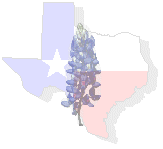 About
the Lyrics of Yellow Rose Of Texas
About
the Lyrics of Yellow Rose Of Texas
A manuscript of a poem, but not music, appeared
around 1836 signed "H.B.C." and giving honor to a
lover: The earliest known copy of the song "The Yellow
Rose of Texas" appeared soon after the Battle of San Jacinto.
This handwritten version was dedicated to "E.A. Jones".
(Editor's note and theory - Oddly enough, one "Edward A. Jones" was the first
African American to graduate from an American university - Amherst
College, in1826. Any connection between the two is unknown).
There's a yellow rose in Texas
That I am a going to see
No other darky knows her
No one only me
She cryed so when I left her
It like to broke my heart
And if I ever find her
We nevermore will part
And continues:
She's the sweetest rose of color
This darky ever knew
Her eyes are bright as diamonds
They sparkle like the dew
You may talk about dearest May
and sing of Rosa Lee
But the yellow rose of Texas
Beats the belles of Tennessee
Obviously, the author is black, or is pretending to be, and
has left a
love, and has come connection to Tennessee.
More
than 25 years later, the lyrics were changed, some might say whitewashed....... "Soldier"
replaced "darky." And the first line of the chorus was also
changed to read,
"She's the sweetest little flower...."
As the Texas Confederate soldiers marched off to battle, this new and somewhat censored version was what they were singing.
In 1864 General Hood and the Texas Brigade fighting in Tennessee,
were defeated. His men retreated in such confusion they thought
the war was over. Many headed home, and a fourth stanza was
added:
And now I'm going southward, for my heart is full of woe,
I'm going back to Georgia, to see my Uncle Joe.
You may talk about your Beauregard, and sing of Bobbie Lee,
But the gallant Hood of Texas played hell in Tennessee. [Chorus]
Some versions have the third line changed to read, "...and
sing of
General Lee," - an obvious reference to the Confederate
General Robert E. Lee.
In
1936 a concert arrangement was offered by David W. Guion for
the Texas Centennial (and dedicated to Franklin D. Roosevelt,
who ordered a White House performance).
In 1955 Mitch Miller recorded an arrangement for Columbia Records.
The lyrics were, by then, much altered:
She's the sweetest little rosebud,
That Texas ever knew
Her eyes are bright as diamonds,
They sparkle like the dew,
You may talk about your Clementine
and sing of Rosalee,
But The Yellow Rose of Texas
is the only girl for me!


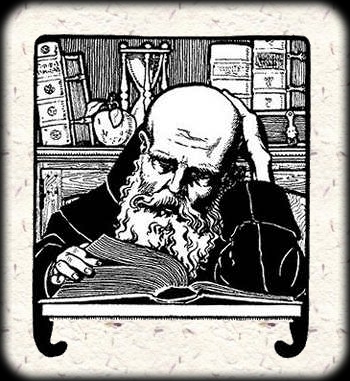
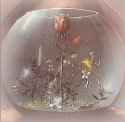 including the music of the spheres, the music of a Renaissance alchemist, music created by software and artificial intelligence, the music of the fairies, the music of the Illuminati, the world's most mysterious book, the world's oldest song, a way you can compose music like Mozart, the world's oldest love song,
including the music of the spheres, the music of a Renaissance alchemist, music created by software and artificial intelligence, the music of the fairies, the music of the Illuminati, the world's most mysterious book, the world's oldest song, a way you can compose music like Mozart, the world's oldest love song,  The
Legend
The
Legend